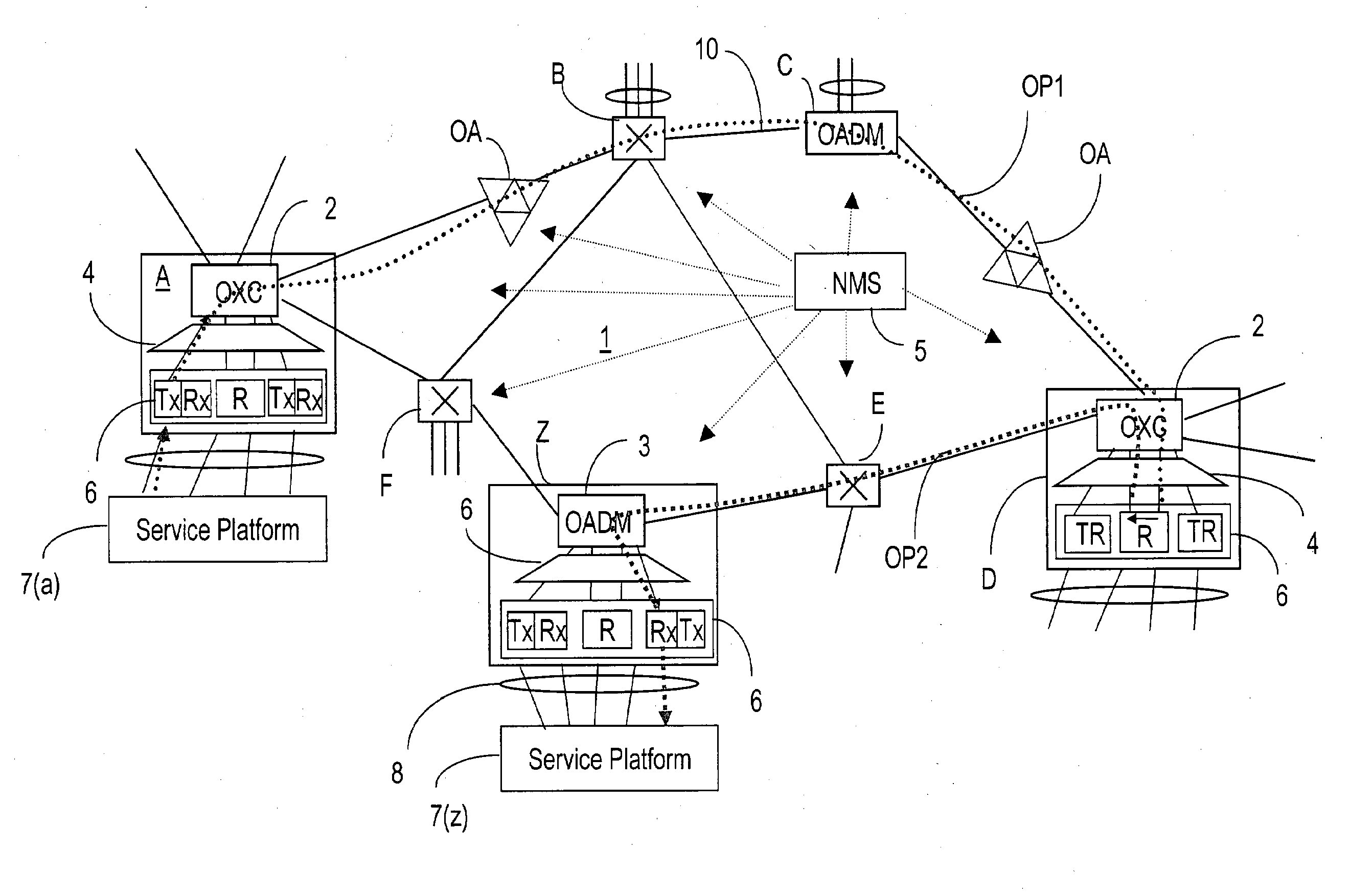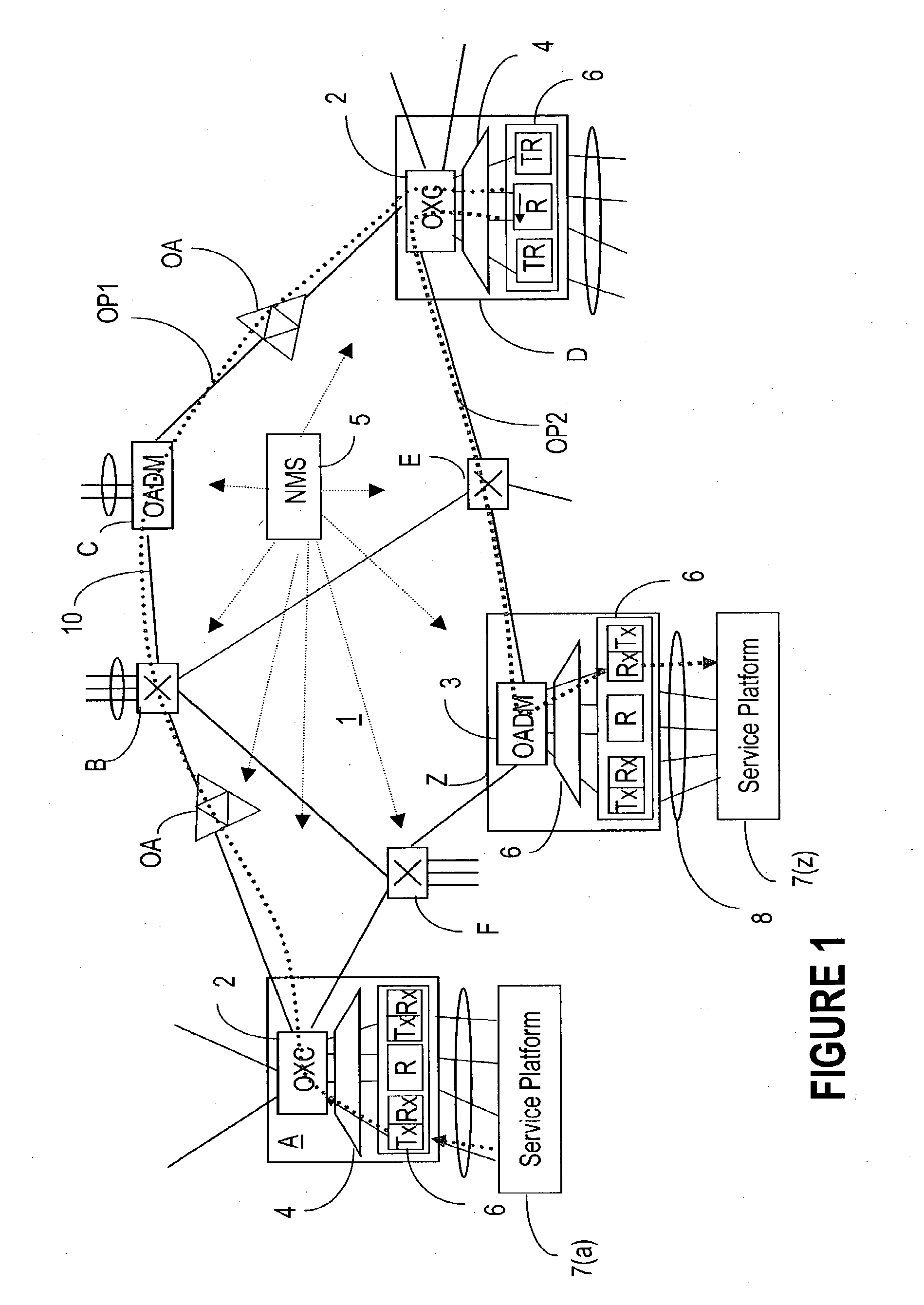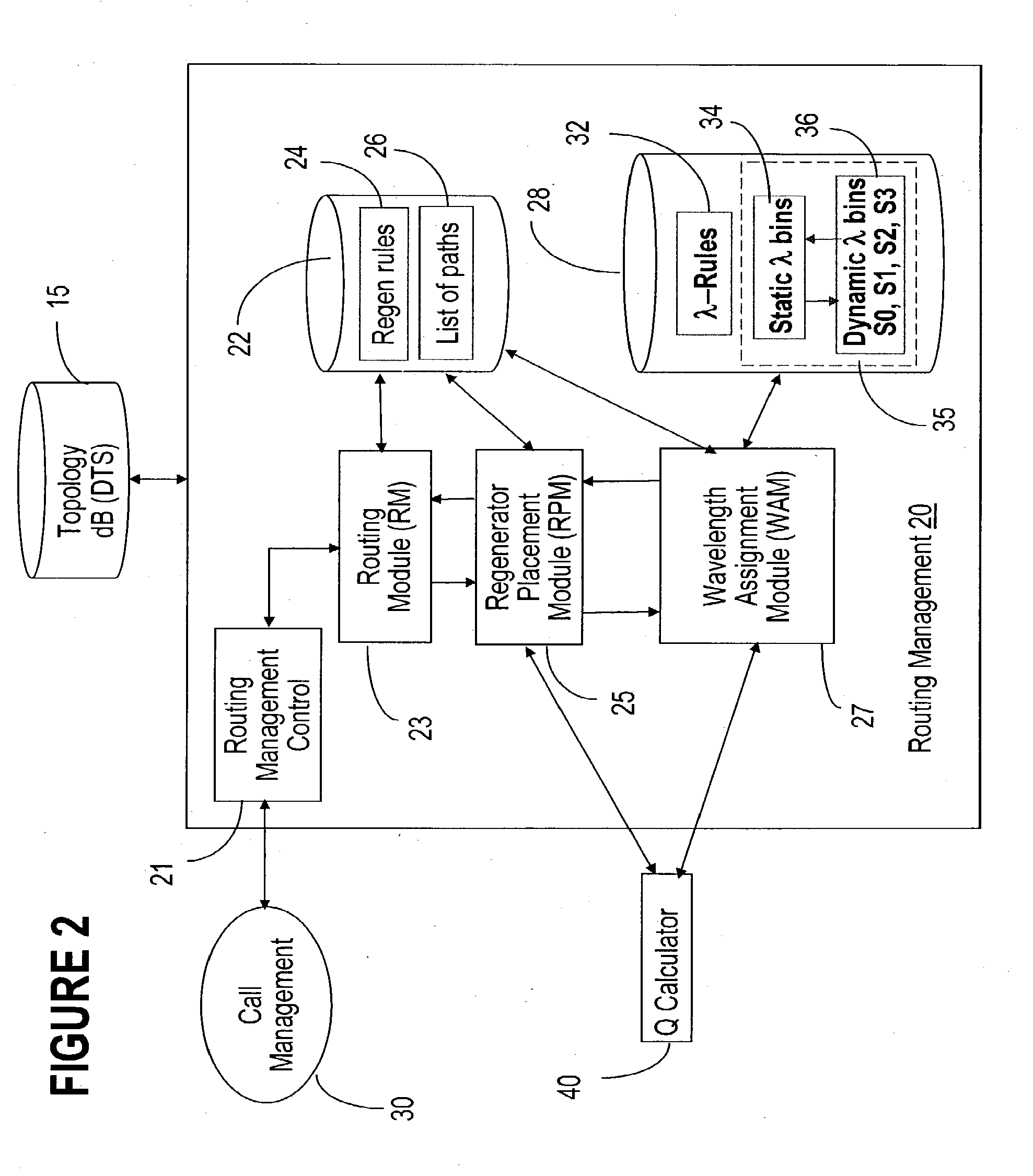Channel Wavelength Assignment With Transient Reduction
a wavelength assignment and transient reduction technology, applied in the field of optical telecommunications networks, can solve the problems of unsatisfactory utilization of ulr in point-to-point network architecture, unsatisfactory utilization of ulr, and reduction of node complexity, and consequently network cost, so as to reduce the cost of network maintenance and operation, optimize the wavelength selection process, and reduce the effect of additional costs
- Summary
- Abstract
- Description
- Claims
- Application Information
AI Technical Summary
Benefits of technology
Problems solved by technology
Method used
Image
Examples
Embodiment Construction
[0027]FIG. 1 shows an example of a photonic network 1 to which the present invention applies. As shown and described in the parent Patent Application Docket 1021US, network 1 comprises bidirectional fiber links 10 connecting a plurality of flexibility sites, which are nodes A, B, C, D, E, F, Z in this example. The nodes could be switching nodes A, B, D, E, F, or OADM (optical add / drop multiplexing) nodes C, Z. User traffic 8, originating and terminating on a service platform 7 (e.g. a router, an ATM switch, an EXC, etc.), accesses network 1 at a switching node or an OADM node, also called a flexibility site.
[0028]A flexibility site or node of agile network 1 may be partitioned into the following building blocks:
[0029]a) Wavelength switches 2 and OADMs 3, which provide optical passthrough, (bypassing OEO conversions), and optical add / drop of the local traffic from / to the service platform 7.
[0030]b) An electro-optics interface 6, that performs on / off ramp of client signals onto / from t...
PUM
 Login to View More
Login to View More Abstract
Description
Claims
Application Information
 Login to View More
Login to View More - R&D
- Intellectual Property
- Life Sciences
- Materials
- Tech Scout
- Unparalleled Data Quality
- Higher Quality Content
- 60% Fewer Hallucinations
Browse by: Latest US Patents, China's latest patents, Technical Efficacy Thesaurus, Application Domain, Technology Topic, Popular Technical Reports.
© 2025 PatSnap. All rights reserved.Legal|Privacy policy|Modern Slavery Act Transparency Statement|Sitemap|About US| Contact US: help@patsnap.com



